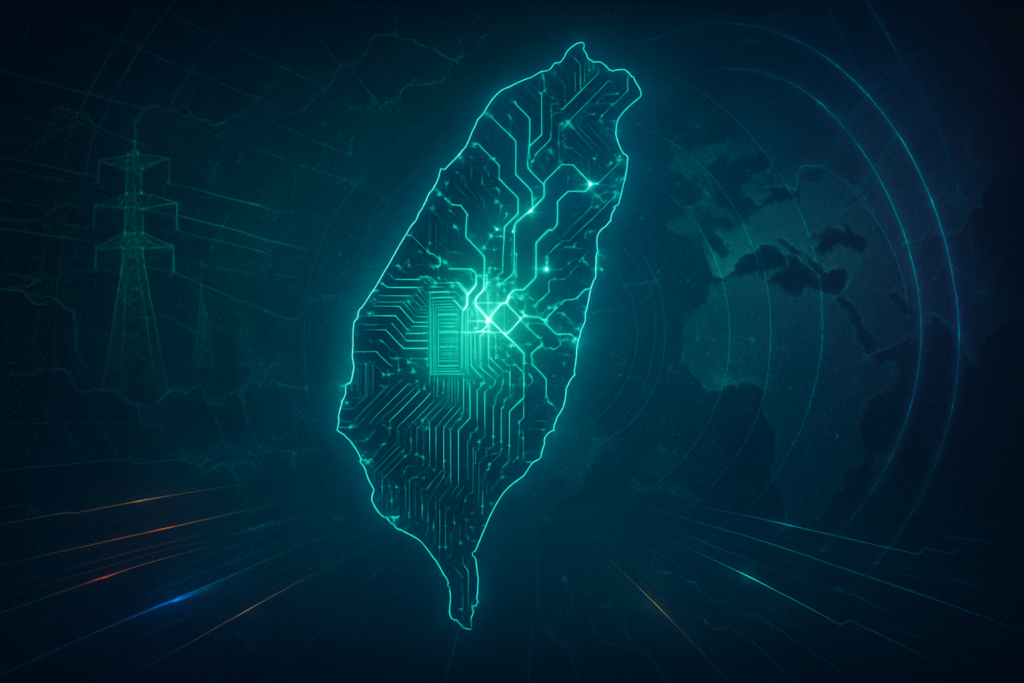Financial News
The Dual Threat: How Taiwan’s Energy Insecurity and Geopolitical Risks Endanger TSMC and the World’s Tech Future

Taiwan, the undisputed epicenter of advanced semiconductor manufacturing, finds its critical role in the global technology ecosystem increasingly imperiled by a potent combination of domestic energy insecurity and escalating geopolitical tensions. At the heart of this precarious situation lies Taiwan Semiconductor Manufacturing Company (TSMC) (NYSE: TSM), the world's leading contract chipmaker, whose uninterrupted operation is vital for industries ranging from artificial intelligence and consumer electronics to automotive and defense. The fragility of Taiwan's energy grid, coupled with the ever-present shadow of cross-strait conflict, poses a severe and immediate threat to TSMC's production capabilities, potentially unleashing catastrophic ripple effects across the global economy and significantly impacting the development and deployment of advanced AI technologies.
The intricate dance between Taiwan's reliance on imported energy and its strategic geopolitical position creates a volatile environment for TSMC, a company that consumes a staggering and growing portion of the island's electricity. Any disruption, whether from a power outage or an external blockade, could cripple the sophisticated and continuous manufacturing processes essential for producing cutting-edge chips. As the world increasingly depends on these advanced semiconductors for everything from smartphones to the data centers powering generative AI, the vulnerabilities facing Taiwan and its silicon champion have become a paramount concern for governments, tech giants, and industries worldwide.
A Precarious Balance: Energy Demands and Geopolitical Flashpoints
The technical and operational challenges facing TSMC due to Taiwan's energy situation are profound. Semiconductor fabrication plants (fabs) are among the most energy-intensive industrial facilities globally, requiring a continuous, stable, and high-quality power supply. TSMC's electricity consumption is colossal, projected to reach 10-12% of Taiwan's total usage by 2030, a significant jump from 8% in 2023. This demand is driven by the increasing complexity and power requirements of advanced nodes; for instance, a single 3-nanometer wafer required 40.5 kilowatt-hours of electricity in 2023, more than double that of 10-nanometer chips. The island's energy infrastructure, however, is heavily reliant on imported fossil fuels, with 83% of its power derived from coal, natural gas, and oil, and 97% of its total energy supply being imported. This over-reliance creates a critical vulnerability to both supply chain disruptions and price volatility.
Taiwan's grid stability has been a recurring concern, marked by significant blackouts in 2021 and 2022 that impacted millions, including TSMC. While TSMC has robust backup systems, even momentary power fluctuations or "brownouts" can damage sensitive equipment and compromise entire batches of wafers, leading to substantial financial losses and production delays. The decommissioning of Taiwan's last operational nuclear reactor in May 2025, a move intended to shift towards renewable energy, has exacerbated these issues, with subsequent power outages pushing the grid's reserve capacity below mandated thresholds. This scenario differs significantly from past energy challenges, where the primary concern was often cost or long-term supply. Today, the immediate threat is the sheer stability and resilience of the grid under rapidly increasing demand, particularly from the booming semiconductor sector, against a backdrop of declining baseload power from nuclear sources and slower-than-anticipated renewable energy deployment.
Beyond domestic energy woes, the geopolitical landscape casts an even longer shadow. China's assertive stance on Taiwan, viewed as a renegade province, manifests in frequent military exercises in the Taiwan Strait, demonstrating a credible threat of blockade or even invasion. Such actions would immediately sever Taiwan's vital energy imports, especially liquefied natural gas (LNG), which would deplete within weeks, bringing the island's power grid and TSMC's fabs to a standstill. The Strait is also a critical global shipping lane, with 50% of the world's containerships passing through it; any disruption would have immediate and severe consequences for global trade far beyond semiconductors. This differs from previous geopolitical concerns, which might have focused on trade tariffs or intellectual property theft. The current threat involves the physical disruption of manufacturing and supply chains on an unprecedented scale, making the "silicon shield" a double-edged sword that protects Taiwan but also makes it a primary target.
Initial reactions from the AI research community and industry experts highlight deep concern. Analysts from leading financial institutions have frequently downgraded economic growth forecasts citing potential Taiwan conflict scenarios. Industry leaders, including those from major tech firms, have voiced anxieties over the lack of viable alternatives to TSMC's advanced manufacturing capabilities in the short to medium term. The consensus is that while efforts to diversify chip production globally are underway, no single region or company can replicate TSMC's scale, expertise, and efficiency in producing cutting-edge chips like 3nm and 2nm within the next decade. This makes the current energy and geopolitical vulnerabilities a critical choke point for technological advancement worldwide, particularly for the compute-intensive demands of modern AI.
Ripples Through the Tech Ecosystem: Who Stands to Lose (and Gain)?
The potential disruption to TSMC's operations due to energy insecurity or geopolitical events would send shockwaves through the entire technology industry, impacting tech giants, AI companies, and startups alike. Companies that stand to lose the most are those heavily reliant on TSMC for their advanced chip designs. This includes virtually all major players in the high-performance computing and AI space: Apple (NASDAQ: AAPL), which sources the processors for its iPhones and Macs exclusively from TSMC; Nvidia (NASDAQ: NVDA), the dominant force in AI accelerators, whose GPUs are fabricated by TSMC; Qualcomm (NASDAQ: QCOM), a leader in mobile chipsets; and Advanced Micro Devices (NASDAQ: AMD), a key competitor in CPUs and GPUs. Any delay or reduction in TSMC's output would directly translate to product shortages, delayed launches, and significant revenue losses for these companies.
The competitive implications for major AI labs and tech companies are severe. A prolonged disruption could stifle innovation, as access to the latest, most powerful chips—essential for training and deploying advanced AI models—would become severely restricted. Companies with less diversified supply chains or smaller cash reserves would be particularly vulnerable, potentially losing market share to those with more resilient strategies or alternative sourcing options, however limited. For startups, especially those developing AI hardware or specialized AI chips, such a crisis could be existential, as they often lack the leverage to secure priority allocation from alternative foundries or the resources to absorb significant delays.
Potential disruption to existing products and services would be widespread. Consumers would face higher prices and limited availability of everything from new smartphones and laptops to gaming consoles and electric vehicles. Data centers, the backbone of cloud computing and AI services, would struggle to expand or even maintain operations without a steady supply of new server processors and AI accelerators. This could lead to a slowdown in AI development, increased costs for AI inference, and a general stagnation in technological progress.
In terms of market positioning and strategic advantages, the crisis would underscore the urgent need for supply chain diversification. Companies like Intel (NASDAQ: INTC), which is actively expanding its foundry services (Intel Foundry) with significant government backing, might see an opportunity to gain market share, albeit over a longer timeline. However, the immediate impact would be overwhelmingly negative for the industry as a whole. Governments, particularly the U.S. and European Union, would likely accelerate their efforts to incentivize domestic chip manufacturing through initiatives like the CHIPS Act, further reshaping the global semiconductor landscape. This scenario highlights a critical vulnerability in the current globalized tech supply chain, forcing a re-evaluation of just-in-time manufacturing in favor of resilience and redundancy, even at a higher cost.
The Broader Canvas: AI's Future and Global Stability
The issues facing TSMC and Taiwan are not merely a supply chain hiccup; they represent a fundamental challenge to the broader AI landscape and global technological trends. Advanced semiconductors are the bedrock upon which modern AI is built. From the massive training runs of large language models to the efficient inference on edge devices, every AI application relies on the continuous availability of cutting-edge chips. A significant disruption would not only slow down the pace of AI innovation but could also create a chasm between the demand for AI capabilities and the hardware required to deliver them. This fits into a broader trend of increasing geopolitical competition over critical technologies, where control over semiconductor manufacturing has become a strategic imperative for nations.
The impacts would be far-reaching. Economically, a major disruption could trigger a global recession, with estimates suggesting a potential $10 trillion loss to the global economy in the event of a full-scale conflict, or a 2.8% decline in global economic output from a Chinese blockade alone in the first year. Technologically, it could lead to a period of "AI stagnation," where progress slows due to hardware limitations, potentially undermining the anticipated benefits of AI across various sectors. Militarily, it could impact national security, as advanced chips are crucial for defense systems, intelligence gathering, and cyber warfare capabilities.
Potential concerns extend beyond immediate economic fallout. The concentration of advanced chip manufacturing in Taiwan has long been recognized as a single point of failure. The current situation highlights the fragility of this model and the potential for a cascading failure across interdependent global systems. Comparisons to previous AI milestones and breakthroughs underscore the current predicament. Past advancements, from deep learning to transformer architectures, have been fueled by increasing computational power. A constraint on this power would be a stark contrast to the continuous exponential growth that has characterized AI's progress. While past crises might have involved specific component shortages (e.g., during the COVID-19 pandemic), the current threat to TSMC represents a systemic risk to the foundational technology itself, potentially leading to a more profound and sustained impact.
The situation also raises ethical and societal questions about technological dependency and resilience. How should nations balance the efficiency of globalized supply chains with the imperative of national security and technological sovereignty? The implications for developing nations, which often lack the resources to build their own semiconductor industries, are particularly stark, as they would be disproportionately affected by a global chip shortage. The crisis underscores the interconnectedness of geopolitics, energy policy, and technological advancement, revealing how vulnerabilities in one area can quickly cascade into global challenges.
The Road Ahead: Navigating a Turbulent Future
Looking ahead, the trajectory of Taiwan's energy security and geopolitical stability will dictate the future of TSMC and, by extension, the global chip supply chain. Near-term developments will likely focus on Taiwan's efforts to bolster its energy infrastructure, including accelerating renewable energy projects and potentially re-evaluating its nuclear phase-out policy. However, these are long-term solutions that offer little immediate relief. Geopolitically, the coming months and years will be marked by continued vigilance in the Taiwan Strait, with international diplomacy playing a crucial role in de-escalating tensions. The U.S. and its allies will likely continue to strengthen their military presence and support for Taiwan, while also pushing for greater dialogue with Beijing.
Potential applications and use cases on the horizon for chip diversification include increased investment in "chiplet" technology, which allows different components of a chip to be manufactured in separate locations and then integrated, potentially reducing reliance on a single fab for an entire complex chip. Regional chip manufacturing hubs, such as those being developed in the U.S., Japan, and Europe, will slowly come online, offering some degree of redundancy. TSMC itself is expanding its manufacturing footprint with new fabs in Arizona, Kumamoto, and Dresden, though it has committed to keeping 80-90% of its production and all its cutting-edge R&D in Taiwan.
Challenges that need to be addressed are numerous. Taiwan must rapidly diversify its energy mix and significantly upgrade its grid infrastructure to ensure stable power for its industrial base. Geopolitically, a sustainable framework for cross-strait relations that mitigates the risk of conflict is paramount, though this remains an intractable problem. For the global tech industry, the challenge lies in balancing the economic efficiencies of concentrated production with the strategic imperative of supply chain resilience. This will require significant capital investment, technological transfer, and international cooperation.
Experts predict a bifurcated future. In the optimistic scenario, Taiwan successfully navigates its energy transition, and geopolitical tensions remain contained, allowing TSMC to continue its vital role. In the pessimistic scenario, an energy crisis or military escalation leads to a severe disruption, forcing a rapid, costly, and inefficient restructuring of the global chip supply chain, with profound economic and technological consequences. Many analysts believe that while a full-scale invasion is a low-probability, high-impact event, the risk of a blockade or sustained power outages is a more immediate and tangible threat that demands urgent attention.
A Critical Juncture for Global Tech
In summary, the confluence of Taiwan's energy security challenges and heightened geopolitical risks presents an unprecedented threat to TSMC and the global chip supply chain. The island's fragile, import-dependent energy grid struggles to meet the insatiable demands of advanced semiconductor manufacturing, making it vulnerable to both internal instability and external pressure. Simultaneously, the ever-present shadow of cross-strait conflict threatens to physically disrupt or blockade the very heart of advanced chip production. The immediate significance lies in the potential for catastrophic disruptions to the supply of essential semiconductors, which would cripple industries worldwide and severely impede the progress of artificial intelligence.
This development marks a critical juncture in AI history and global technology. Unlike past supply chain issues, this threat targets the foundational hardware layer upon which all modern technological advancement, especially in AI, is built. It underscores the fragility of a highly concentrated, globally interdependent technological ecosystem. The long-term impact could be a fundamental reshaping of global supply chains, a re-prioritization of national security over pure economic efficiency, and a potentially slower, more costly path for AI innovation if resilience is not rapidly built into the system.
What to watch for in the coming weeks and months includes any further developments in Taiwan's energy policy, particularly regarding nuclear power and renewable energy deployment. Monitoring the frequency and scale of military exercises in the Taiwan Strait will be crucial indicators of escalating or de-escalating geopolitical tensions. Furthermore, observing the progress of TSMC's diversification efforts and the effectiveness of government initiatives like the CHIPS Act in establishing alternative fabrication capabilities will provide insights into the industry's long-term resilience strategies. The world's technological future, and indeed the future of AI, hangs precariously on the stability of this small, strategically vital island.
This content is intended for informational purposes only and represents analysis of current AI developments.
TokenRing AI delivers enterprise-grade solutions for multi-agent AI workflow orchestration, AI-powered development tools, and seamless remote collaboration platforms.
For more information, visit https://www.tokenring.ai/.
More News
View More




Recent Quotes
View More
Quotes delayed at least 20 minutes.
By accessing this page, you agree to the Privacy Policy and Terms Of Service.



